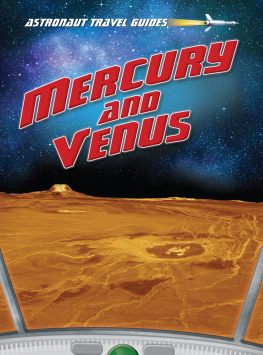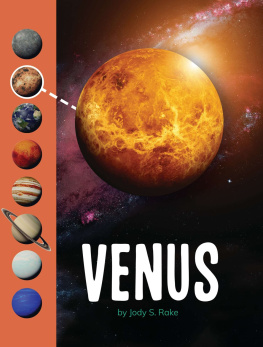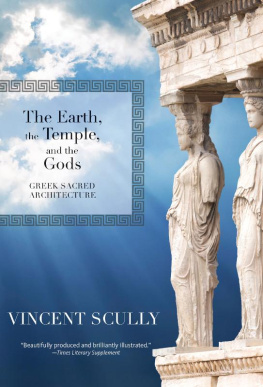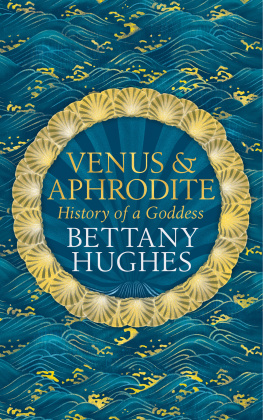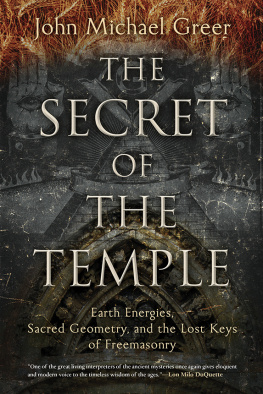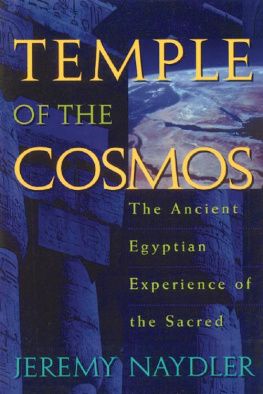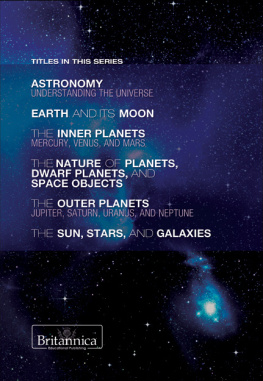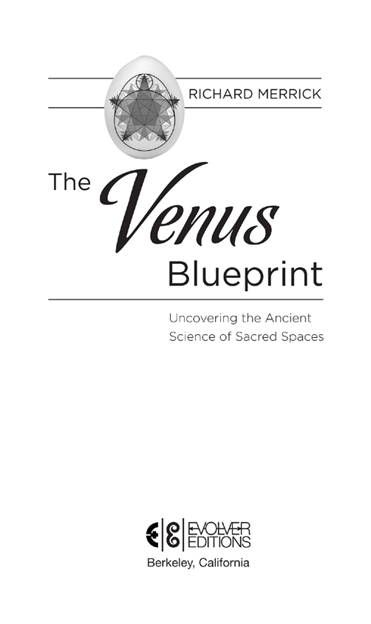Copyright 2012 by Richard Merrick. All rights reserved. No portion of this book, except for brief review, may be reproduced, stored in a retrieval system, or transmitted in any form or by any meanselectronic, mechanical, photocopying, recording, or otherwisewithout written permission of the publisher. For information contact Evolver Editions c/o North Atlantic Books.
Published by Evolver Editions,
an imprint of North Atlantic Books | Art direction and cover design by
michaelrobinsonnyc.com |
| P.O. Box 12327 |
| Berkeley, California 94712 |
Images of Rosslyn chapel in courtesy of Nenad Djurdjevic.
The Venus Blueprint: Uncovering the Ancient Science of Sacred Spaces is sponsored by the Society for the Study of Native Arts and Sciences, a nonprofit educational corporation whose goals are to develop an educational and cross-cultural perspective linking various scientific, social, and artistic fields; to nurture a holistic view of arts, sciences, humanities, and healing; and to publish and distribute literature on the relationship of mind, body, and nature.
North Atlantic Books publications are available through most bookstores. For further information, visit our website at www.northatlanticbooks.com or call 800-733-3000.
Library of Congress Cataloging-in-Publication Data
Merrick, Richard, 1955
The Venus blueprint : uncovering the ancient science of sacred spaces / by Richard Merrick.
p. cm.
Includes bibliographical references ().
eISBN: 978-1-58394-539-1
1. Sacred space. I. Title.
BL580.M455 2012
203.5dc23
2012003593
v3.1
For my own Venusian goddesses
Sherolyn, Adrienne, and Doris
A CKNOWLEDGMENTS
B eginning as a collaborative research project with famed Scottish composer Stuart Mitchell, this book chronicles our path of research and discovery concerning enigmatic Rosslyn chapel, near Edinburgh, Scotland. Digging through countless books, websites, and articles together, we sought to understand the chapels connection to the planet Venusin particular, its rare conjunction with the Sun and Earth, known as the Venus transit.
Thanks to Stuarts creative spirit, curiosity, and encouragement, I was driven to dig further, eventually discovering the untold history of religion as it had been encoded in Rosslyns symbolism and architectural design. I simply could not have written this book without him, and I am deeply grateful for his help and friendship throughout the process.
Thanks also to Stuarts father, Tommy Mitchell, who so inspired me with his wonderful poems, writings, and philosophical chats over tea and biscuits. In addition to the joy of his friendship, Tommy was something of a guru for me along the way. His ideas helped place me in a frame of mind in which I could see things as they might have been understood in a world that existed long before the rise of Christianity and Western materialism.
During this project, I was recruited to write a number of essays for Caduceus magazine; TokenRock.com; and a book entitled The View Beyond, about Sir Francis Bacon. Each of these projects contributed in different ways to the direction of this study. For these opportunities, my thanks and gratitude go out to Simon Best, Scott Leuthold, Carrie-Anne DAngelo, Dave Patrick, and Colum Hayward.
My thanks also go to Shannon Novak, a New Zealand artist whose work in music visualization pushed me toward a deeper understanding of tone and color. For additional helpful comments and suggestions, my thanks go to archeomusicologist Leon Crickmore, who sent me his excellent research on Babylonian harmonic theory; Chris Jordan, who offered his research concerning ancient solar collectors; Doug Pritchard, with the Centre for Digital Design Documentation, a collaboration between the Glasgow School of Art and Historic Scotland, for permission to use his wonderful laser-scanned and 3D images of Rosslyn; Nenad Djurdjevic, who graciously gave me special access to research on the Bosnian pyramids; Ian Robertson, for sharing his detailed knowledge of Rosslyn chapel; Mary Hubbard for her detailed notes on Bramantes design of the Vatican; Scott Olsen, for sending me his beautiful study of the golden section; Dwight Marcus, for inspiring me with his multiaesthetic writing style; longtime friend Dan Reed, who has remained a steadfast supporter and advocate of my work in the Dallas community; and Daniel Pinchbeck for publishing this study through Evolver Editions.
Thanks finally to all the others who have graciously offered their own perspectives and research along the way. This information has proven to be extremely helpful in verifying my findings and opening up new avenues of inquiry, contributing in no small part to the conclusions of this work.
C ONTENTS
L IST OF I LLUSTRATIONS
)
P REFACE
Y ou just never know where you will end up when you start down a new and unfamiliar path. All you have is a burning curiosity and your own intuition to help guide you. For me, it was an innocent curiosity about where and when the science of harmonics began and why it was so important to ancient cultures.
I could never have imagined how far this one question would carry me. I did not expect to become captivated by a fifteenth-century chapel in Scotland or immersed in the history of the Vatican. I could never have predicted that I would find the Rig-Veda to be the source for all the worlds religions or to be based on the physics of music. I had no idea that transatlantic voyages were common in ancient times or that pyramids were symbolic of an invisible, transcendental mountain. I certainly did not know that psychedelic plants were once used in virtually every culture around the world to induce religious visionsmuch less that temples were constructed as resonance chambers to enhance such visions.
But of all my revelations in this amazing quest, the most startling was how the orbital pattern of Venus was used to design many of the worlds greatest temples. Even more startling was how buildings designed according to this temple template exhibit extraordinary acoustical qualities that make them harmonious with such things as the Earths resonant frequencies, the speed of sound, and even the temperature of a beehive. It still astonishes me that something like this could have been developed so long ago and then entirely forgotten.
My years studying harmonic science and looking for its historical origin have brought about a profound spiritual awakening in me. Not that I discovered religion mind you, but rather a way to look beyond the veneer of faith and myth into a time long ago when the outer and inner worlds were seen as one.
In those days a divine musical intelligence was believed to exist in nature. It spoke to the people through geometry, number, and beautiful patterns in the sky. It inspired them through dreams and visions that played out in the theater of the mind. It whispered to them of some archetypal realm just beyond the sensesa resonant realm of pure music weaving a cosmos of crystallized light.
So it was through the study of harmonics that I came to see the material and spiritual as one. Through the physics and physiology of resonance, I learned to recognize the primordial intelligence that permeates all things. And through this I found a way to reconcile the objective and subjective worlds as one.



